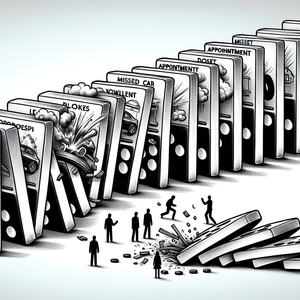The Architect's Role in a Post-Climate Crisis World

For decades, sustainability in architecture has often been reduced to surface-level features—rooftop gardens, solar panels, or energy-efficient appliances. While these elements have value, they are no longer sufficient in addressing the magnitude of the climate crisis. In a post-climate crisis world, architects will need to redefine sustainability, embedding it into every aspect of a building’s lifecycle, from design and material sourcing to construction, use, and eventual deconstruction. For example, regenerative architecture is emerging as a forward-thinking approach that seeks not only to reduce harm but to actively restore and replenish the environment. Buildings of the future may generate more clean energy than they consume, purify the air, or support biodiversity. A prime example of regenerative design is the Bullitt Center in Seattle, often referred to as the "greenest commercial building in the world." It produces net-positive energy through solar power, collects and treats its own water, and uses non-toxic, locally sourced materials. Another critical concept is circular design, which emphasizes the reuse and recycling of materials at the end of a building’s lifespan. With construction waste currently contributing significantly to landfills, adopting circular design principles could revolutionize the industry. For instance, architects may begin designing structures with modular components that can be disassembled and repurposed, creating a closed-loop system that reduces waste and resource depletion.
Resilience in the Face of Climate Extremes
As the impacts of climate change intensify—rising sea levels, severe storms, extreme heat, and droughts—resilience must become a cornerstone of architectural design. Buildings and urban spaces must not only withstand these challenges but also protect the safety, health, and well-being of their inhabitants. One cutting-edge solution lies in amphibious architecture, which adapts to fluctuating water levels. In the Netherlands, a country renowned for its innovative approach to water management, floating neighborhoods like Schoonschip in Amsterdam are paving the way for climate-resilient living. These homes are designed to rise and fall with changing water levels, offering a practical and sustainable response to flooding. Urban design will also play a pivotal role in resilience. Cities must be reimagined to incorporate green infrastructure, such as wetlands, parks, and urban forests, which can help manage stormwater, reduce urban heat islands, and improve air quality. Singapore’s Marina Barrage is a compelling example of multifunctional infrastructure. It acts as a flood control system, a source of clean water, and a recreational space, demonstrating how architecture can balance environmental, functional, and social needs.
Designing with an Eco-Centric Ethos
In the face of climate change, a paradigm shift is occurring in architecture, challenging the traditional human-centric view of design. Instead, an eco-centric ethos is emerging—one that views buildings as part of a larger ecological system rather than isolated entities. This approach prioritizes harmony with nature, drawing inspiration from the natural world to create innovative, sustainable designs. Biomimicry, or the practice of emulating biological processes and ecosystems, is becoming a powerful tool for architects. The Eastgate Centre in Harare, Zimbabwe, is a striking example of this philosophy in action. Inspired by termite mounds, the building uses a natural ventilation system to regulate temperature, drastically reducing the need for artificial heating and cooling and making it highly energy-efficient. At the urban scale, architects are exploring ways to integrate nature into cities, blurring the boundaries between the built and natural environments. Vertical forests, such as Stefano Boeri's Bosco Verticale in Milan, are redefining what urban living can look like. These residential towers are covered with thousands of trees and plants, improving air quality, reducing noise pollution, and fostering biodiversity—all while providing residents with green, livable spaces.
A New Social Contract: Architecture for Equity
The climate crisis is not just an environmental issue; it is also a social one. Vulnerable populations—low-income communities, indigenous groups, and those in developing nations—are disproportionately affected by its impacts. Architects have a moral and professional responsibility to address these inequities, designing infrastructure that is not only sustainable but also inclusive and accessible. Affordable, energy-efficient housing is one area where architects can make a significant difference. Passive house design, which uses super-insulated walls, airtight construction, and heat recovery systems to minimize energy use, is gaining traction as a cost-effective solution. For instance, the Energiesprong initiative in the Netherlands retrofits existing homes to achieve net-zero energy performance, helping low-income households reduce utility bills while lowering their carbon footprint. Community engagement is another essential aspect of this social contract. By involving local residents in the design process, architects can ensure that projects address the specific needs and priorities of the communities they serve. This participatory approach also fosters a sense of ownership and stewardship, empowering communities to adopt and sustain environmentally friendly practices.
Embracing Interdisciplinary Collaboration
The challenges of a post-climate crisis world are too complex for any single discipline to address. Architects must collaborate with experts in environmental science, engineering, sociology, and public policy to develop comprehensive, innovative solutions that address both technical and human dimensions. The Rebuild by Design initiative, launched in the aftermath of Hurricane Sandy, exemplifies the power of interdisciplinary collaboration. This program brought together architects, engineers, and community leaders to develop climate-resilient infrastructure for affected areas. One outcome was the Big U project, a system of parks, berms, and floodwalls that protect Lower Manhattan from storm surges while providing public recreational spaces. By working across disciplines, architects can create designs that not only mitigate the impacts of climate change but also enhance quality of life and foster community resilience.
In a post-climate crisis world, architects are poised to become some of the most influential agents of change. Their role will extend far beyond designing buildings, encompassing the creation of sustainable, resilient, and inclusive spaces that address the urgent challenges of our time. By embracing innovative technologies, eco-centric philosophies, and interdisciplinary collaboration, architects can redefine the built environment and its relationship with the natural world. The stakes could not be higher, but the potential for transformative impact is immense. As stewards of the built environment, architects have the tools, creativity, and responsibility to lead humanity toward a sustainable and resilient future. The question is no longer whether architects will step up to this challenge, but how boldly they will reimagine the world in the face of crisis. In doing so, they can help shape a legacy of hope, innovation, and harmony for generations to come.
Sustainable Design Architect
Leading architecture firms like Perkins & Will, Gensler, or KPF; government urban planning agencies; environmental consultancy firms
Core Responsibilities
Design energy-efficient and net-zero buildings, integrating renewable energy systems and passive design strategies.
Conduct lifecycle assessments to minimize environmental impact from material sourcing to building deconstruction.
Collaborate with engineers and environmental consultants to implement circular design principles, such as modular construction or material reuse.
Required Skills
Expertise in green building certifications (e.g., LEED, WELL, or BREEAM).
Proficiency in sustainable design tools like Sefaira or Tally for environmental performance modeling.
Familiarity with regenerative design concepts and practices.
Climate Resilience Specialist (Architecture)
Urban design firms, international NGOs (e.g., World Resources Institute), municipal governments
Core Responsibilities
Develop strategies to enhance the resilience of buildings and urban spaces against climate risks, including rising sea levels, extreme heat, and severe storms.
Design adaptive infrastructure, such as flood-resilient buildings or amphibious structures, for vulnerable communities.
Integrate green infrastructure solutions like rain gardens, bioswales, and natural stormwater management systems into urban master plans.
Required Skills
Knowledge of climate modeling and risk assessment tools for built environments.
Experience with resilient urban planning and disaster mitigation strategies.
Ability to collaborate with civil engineers, hydrologists, and urban ecologists.
Biomimicry Design Specialist
Niche sustainability-focused firms, research institutions, or interdisciplinary design labs
Core Responsibilities
Apply principles of biomimicry to architectural and urban projects, emulating natural systems for energy efficiency, sustainability, and resilience.
Research biological systems and translate them into innovative building designs, such as self-cooling facades or water-harvesting structures.
Educate design teams on integrating biomimetic solutions into projects and advocate for eco-centric approaches.
Required Skills
Strong background in biology, ecology, or environmental science alongside architectural expertise.
Proficiency in computational design tools like Rhino and Grasshopper for parametric modeling.
Ability to analyze and replicate natural systems in a design context.
Affordable Housing and Net-Zero Design Architect
Nonprofits like Habitat for Humanity, affordable housing developers, or local government agencies
Core Responsibilities
Design affordable housing solutions that meet net-zero energy goals, using passive design techniques and advanced insulation technologies.
Retrofit existing housing stock to enhance energy efficiency and reduce utility costs for low-income households.
Collaborate with community stakeholders to ensure designs meet the needs of underserved populations.
Required Skills
Expertise in Passive House standards and retrofitting techniques.
Experience in community-based design processes and stakeholder engagement.
Knowledge of cost-effective sustainable materials and construction methods.
Interdisciplinary Design Strategist
Interdisciplinary firms like Arup, global initiatives like Rebuild by Design, or academic research labs
Core Responsibilities
Lead collaborative projects that integrate architecture, environmental science, public policy, and engineering to create innovative climate-resilient solutions.
Develop urban-scale designs, such as multi-functional flood protection systems or citywide green infrastructure networks.
Facilitate workshops and design charrettes with diverse stakeholders to address social, environmental, and economic challenges.
Required Skills
Strong project management and facilitation skills to coordinate interdisciplinary teams.
Familiarity with urban systems modeling and GIS software.
Ability to synthesize input from diverse fields into cohesive design strategies.


